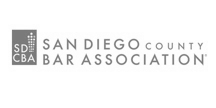Introduction: Slip and fall accidents can result in serious back and spinal injuries, causing significant physical, emotional, and financial hardships. In such cases, it is crucial to understand the legal considerations involved in establishing liability. This blog explores the key factors and legal aspects that come into play when seeking compensation for back and spinal injury cases sustained in slip and fall accidents. As experienced personal injury attorney, we aim to provide valuable insights into this complex area of law to help victims protect their rights and pursue fair compensation.
1- Understanding Back and Spinal Injury Cases
- Overview of common back and spinal injuries resulting from slip and fall accidents
- Importance of seeking immediate medical attention and documenting injuries
- Long-term implications of back and spinal injuries on victims’ lives
2-Elements of Establishing Liability
A. Duty of Care
- Explaining the duty of care property owners owe to visitors
- Differentiating between invitees, licensees, and trespassers
- Highlighting the responsibility to maintain safe premises and prevent hazards
B. Breach of Duty
- Discussing situations where property owners fail to fulfill their duty of care
- Identifying negligent actions or inactions that contribute to slip and fall accidents
- Providing examples of hazardous conditions that may lead to back and spinal injuries
C. Causation
- Exploring the connection between the property owner’s breach of duty and the accident
- Establishing a causal link between the hazardous condition and the back/spinal injuries
- Demonstrating that the injuries were a direct result of the slip and fall incident
3-Gathering Evidence for Your Case
A. Incident Documentation
- Emphasizing the importance of reporting the incident to the property owner or manager
- Collecting evidence such as photographs, videos, and witness statements
- Obtaining incident reports and medical records to support your claim
B. Expert Testimony
- Highlighting the role of medical experts in assessing and diagnosing back and spinal injuries
- Discussing the significance of expert witnesses in establishing the extent of harm and its impact on the victim’s life
- Explaining how their testimony strengthens the liability claim
C. Maintenance Records and Property Owner Negligence
- Exploring the relevance of maintenance records and property inspection reports
- Investigating whether the property owner was aware of the hazardous condition and failed to address it
- Highlighting previous incidents or complaints as evidence of negligence
4-Comparative Negligence and Contributory Fault
- Outlining the concept of comparative negligence and its impact on slip and fall cases
- Discussing how contributory fault affects the victim’s ability to recover damages
- Providing strategies to counter potential arguments of shared responsibility
5-Seeking Compensation for Back and Spinal Injuries
A. Damages in Slip and Fall Cases
- Identifying types of compensable damages, including medical expenses, lost wages, and pain and suffering
- Discussing potential long-term consequences and the need for future medical care
- Calculating the value of damages based on the specific circumstances of the case
B. Settlement Negotiations vs. Trial
- Weighing the pros and cons of settlement negotiations and going to trial
- Discussing factors to consider when deciding the best course of action
- Highlighting the importance of consulting with an experienced personal injury attorney
Conclusion:
Establishing liability in slip and fall cases involving back and spinal injuries is a complex legal process. By understanding the legal considerations outlined in this blog, you can navigate the legal system more effectively and protect your rights. If you or a loved one has suffered back or spinal injuries in a slip and fall accident, contact our dedicated team.









